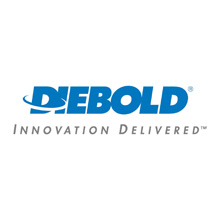 |
| Diebold has developed the first ATM that includes integration with mobile devices via the cloud |
Influenced by the expectations of the Millennial generation, Diebold, Incorporated is reimagining the automated teller machine (ATM) experience. Diebold has developed the first ATM that includes integration with mobile devices via the cloud, allowing consumers to complete secure, cardless transactions. It also features a new user interface that enables touch gestures, such as flick and drag, commonly used with smart phones and tablet devices. Diebold demonstrated its unique ATM experience at the 2013 International Consumer Electronics Show (CES), Jan. 8-11 in Las Vegas.
Considering Millennials' familiarity with mobile device interfaces, Diebold's conceptual ATM interface looks and acts like today's mobile devices, with similar navigation and controls. The ATM is also paperless, delivering transaction receipts via text message or email, based on users' preferences.
"Mobile devices are driving user experience expectations in all facets of commerce. It was only a matter of time before the familiar multi-touch interface style made its way to the ATM," said Frank A. Natoli Jr. , executive vice president and chief innovation officer, Diebold. "With the burgeoning buying power of the Millennial generation, Diebold envisions this technology will further influence user experiences at the ATM."
At CES, Diebold conducted demonstrations of two distinct transactions using the new ATM interface – a cardless withdrawal and a pre-staged, third-party money access. For both transactions, a user integrates his or her mobile device with the ATM by scanning a quick response (QR) code on the ATM's screen. Doing so syncs the device via a cloud-based server and authenticates the user – without requiring an ATM card.
To complete a cardless withdrawal, a preregistered bank customer scans the ATM's QR code using his smartphone. When the devices sync via the cloud, a transaction screen appears on the smartphone where the customer selects the withdrawal amount. The cloud server then sends a one-time code to the smartphone, which the customer enters on the ATM screen to authenticate the transaction and receive cash.
With smartphones used as authentication devices, cardless transactions reduce consumer security risks related to lost or stolen cards, as well as the opportunity for skimming. Privacy is enhanced when users input transaction details on the smartphone screen rather than the ATM screen. In addition, the one-time authentication code expires immediately after completing a transaction.
Diebold's second transaction demo presented a unique option for completing person-to-person payments. A customer can set up a pre-staged transaction that authorises access to cash to a third party. The customer inputs the payment amount and recipient's contact information, which can be selected directly from his or her contact list. The recipient then receives a one-time code he or she can use at an ATM or branch to receive money.
Because the ATMs utilise cloud-based services, they do not require an onboard computer, which translates into reduced power requirements. Without card readers and receipt printers, the terminals use less hardware, which means less use of raw materials to produce those devices. Since the demo ATM is paperless, there is no paper waste from receipts. In addition, with less hardware to maintain and no dispensable paper to replenish, financial institutions may realise greater uptime for ATMs.
Diebold plans to launch pilot testing of its millennial-inspired ATM with financial institutions later in 2013.


















